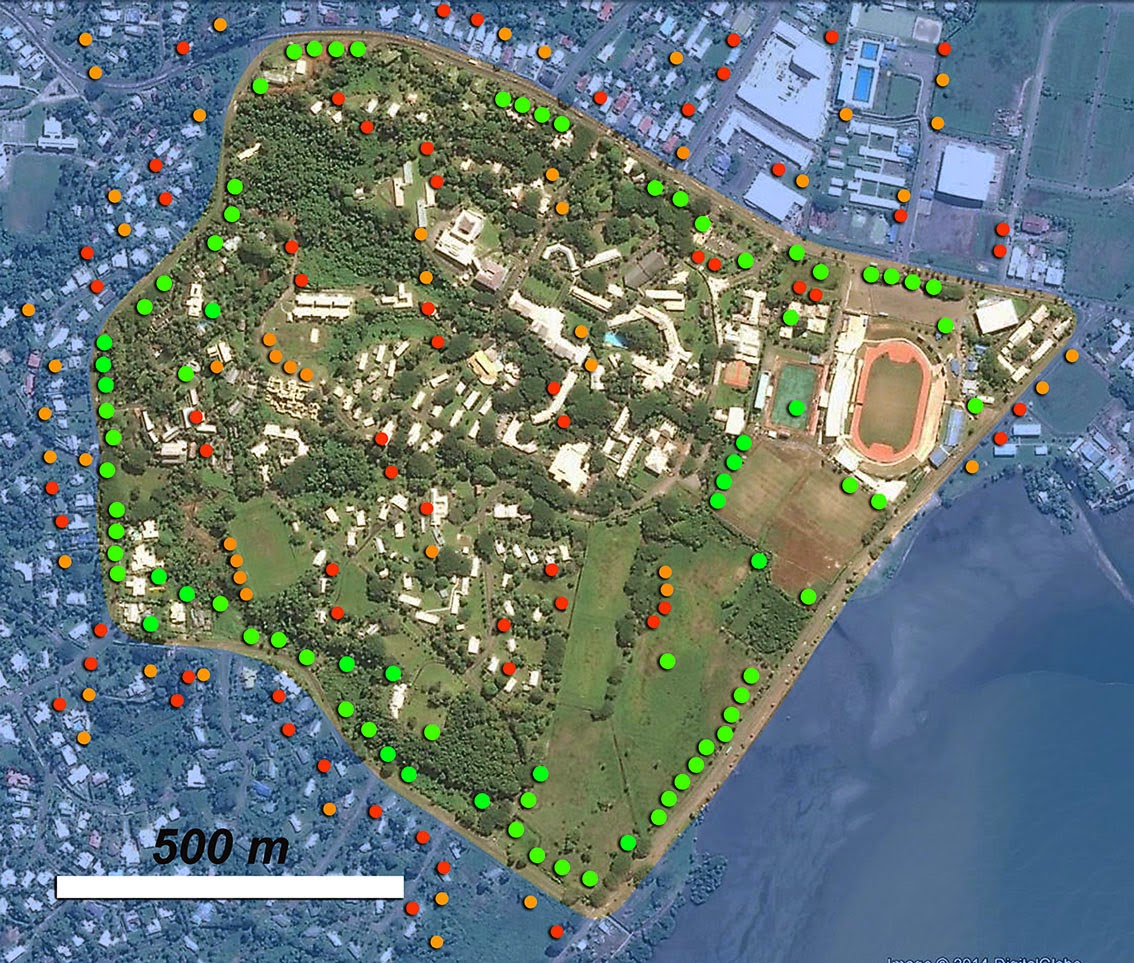Tetiaroa is an atoll in the Windward group of the Society Islands of French Polynesia. The atoll is located 33 miles (53 km) north of Tahiti. The atoll stretches on a total surface of 2.3 square miles (6 square km); approximately 1,445 acres (585 hectares) of sand are divided in 13 motus (islets) with varying surface areas.
During the pre-European period, Tetiaroa was the summer residence of the chiefs of the village of Arue (now a municipality of Tahiti) and the royal Pomare family. In 1904, the royal family offered Tetiaroa Dr. Johnston Walter Williams (1874-1937), the only dentist of Tahiti and the British consul from 1916 to 1935. In 1965, in accordance with Polynesian property laws, the famous actor Marlon Brando leased the terrestrial part of the atoll for 99 years.
In 2002, two years before the actor’s death, Brando signed a new will and trust agreement that left no instructions for Tetiaroa. Following his death in 2004, the executors of the estate granted development rights to Pacific Beachcomber SC, a Tahitian company that owns hotels throughout French Polynesia and shared in Brando’s vision for an eco-luxury resort on the atoll. Beachcomber SC began construction on Tetiaroa in 2009.
In June 2009, the company Beachcomber SA and the Brando family gave their agreement to integrate the atoll of Tetiaroa in a project of conservation of Polynesian coconut varieties.
Here is our landscaping proposal to include rationale coconut conservation on the Tetiaroa Atoll (click on the picture to enlarge it). Practically, four small islands and a small peninsula will each be replanted with a single variety. Thanks to the geographic isolation of these places, coconuts palms will breed only between palms of the same variety, allowing conservation, production and dissemination of certified seednuts. Five varieties of coconut palms will be then preserved on Tetiaroa.
In this design,
more coconut palms are cut than replanted. Indeed,
we do not want to cover again the Tetiaroa Atoll with coconut palms. Large areas of the atolls (in red in the figure) will be freed of coconut palms to allow endemic vegetation to increase and birds to nest - although birds are also nesting in the coconut palms.
About 100 years ago, the coconut grove was planted on Tetiaroa by decision of Dr. Johnston Walter Williams, dentist of the royal family, in order to produce copra. At the time, the planting technique consisted, in most cases, cut off all the natural vegetation, to let it dry and then burn everything. Most of the coconut palms seedlings were imported from Tahiti. Maintenance of coconuts was done, at least to a certain period, by "vacuum cleaning", i.e. by cutting and burning everything that was not coconut palm. These planting techniques were harmful to the biodiversity of endemic species (Dupon, 1987). There were also damaging for the coconut palms themselves, especially from the point of view of conservation of the coconut genetic diversity.

The current density of adult palms is very high, up to 450 palms per hectare, whereas the normal planting densities are about 100 to 200 coconut palms per hectare. The photograph attached compares the density of coconut Tetiaroa to that of a standard plantation of coconut hybrids. Only 20 to 40% of coconut palms follow the original planting device. They are recognizable on the satellite photos to the fact that they are planted in a straight line, generally oriented north-south and east-west. These original coconut plantation are mainly localized on the motus Tiraunu, Hiraan and Horoatera.
Harvesting of coconut and copra production ceased in the 1970s. Many coconut fell on the ground have sprouted, others are eaten by rats, whose population has increased.
Coconuts pierced by rats and partially filled with rainwater promote the proliferation of mosquitoes and flies. The total number of adults on Tetiaroa coconuts can be estimated at between 150,000 and 200,000 trees.
In April 2010, although no funding was dedicated to this activity by the local government, the
first planting of the conservatoire began on Tetiaroa. Seednuts of the
horned coconut variety were planted a a small motu of Tetiaroa. For more information on the horned coconut palm, please visit our
Tetiaroa blog.




